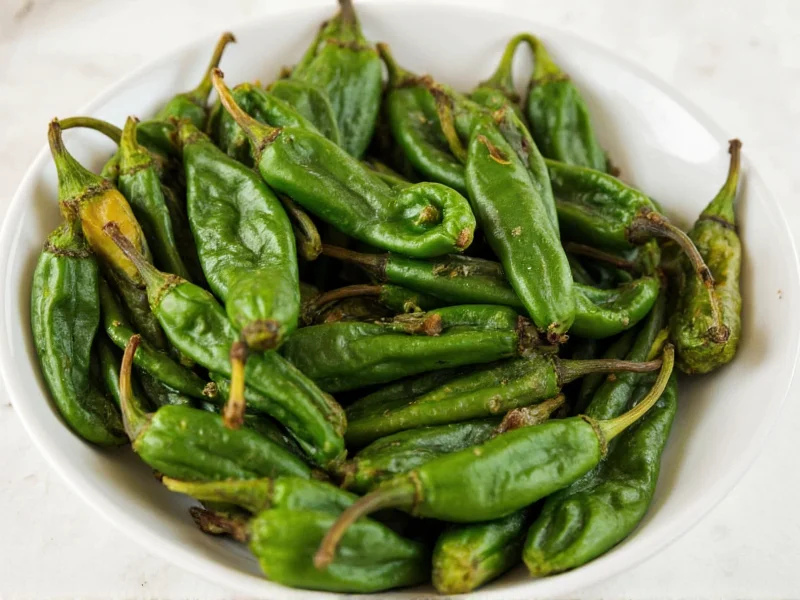Dried poblano peppers, known as ancho peppers in their dehydrated form, represent one of the most versatile and flavorful ingredients in Mexican cooking. Understanding the transformation from fresh poblano to dried ancho is crucial for any home cook or culinary professional looking to authentically recreate traditional Latin American dishes.
From Fresh to Dried: The Poblano Transformation
When poblano peppers reach full maturity and are carefully dried, they undergo a remarkable transformation. The vibrant green color deepens to a rich mahogany brown, while the flavor profile evolves from mild and vegetal to complex, sweet, and subtly smoky. This drying process concentrates the natural sugars and develops nuanced earthy notes that make anchos indispensable in authentic Mexican cuisine.
The name "ancho" literally means "wide" in Spanish, referring to the pepper's broad, heart-shaped form. This distinguishes them from other dried chiles like guajillo or pasilla, which have different shapes and flavor profiles. Understanding what dried poblano peppers are called helps prevent confusion when following authentic recipes that specify "ancho" rather than "dried poblano."
Flavor Profile and Heat Level
Ancho peppers offer a distinctive flavor profile that sets them apart from their fresh counterparts. While fresh poblanos register between 1,000-2,000 Scoville Heat Units (SHU), the drying process doesn't significantly increase their heat level. Instead, it transforms their flavor:
| Characteristic | Fresh Poblano | Dried Ancho |
|---|---|---|
| Heat Level | Mild (1,000-2,000 SHU) | Mild (1,000-2,000 SHU) |
| Primary Flavor Notes | Grassy, vegetal, bell pepper-like | Prune, raisin, tobacco, coffee, subtle smoke |
| Texture | Firm, thick-walled | Leathery, pliable when rehydrated |
| Common Culinary Uses | Stuffed peppers, roasted dishes | Sauces, moles, stews, adobo |
Culinary Applications of Dried Poblano Peppers
Ancho peppers shine in traditional Mexican sauces and complex dishes where their deep, fruity notes can develop fully. Professional chefs and home cooks seeking authentic dried poblano pepper recipes will find these applications most rewarding:
- Mole sauces: Anchos form the base of many traditional mole varieties, particularly mole poblano
- Adobo sauce: Blended with vinegar, garlic, and spices for marinating proteins
- Chile con carne: Adds depth and complexity to hearty meat stews
- Salsas: Rehydrated anchos create rich, complex table salsas
- Spice blends: Ground into homemade chili powder or taco seasoning
Proper Preparation Techniques
Understanding how to use dried poblano peppers properly is essential for maximizing their flavor potential. The most common preparation method is rehydration:
- Remove stems and seeds from the dried peppers
- Place in a heatproof bowl and cover with boiling water
- Weight down with a small plate to keep submerged
- Soak for 15-20 minutes until pliable
- Drain and use as directed in recipes
For deeper flavor extraction, some chefs prefer to toast dried ancho peppers in a dry skillet for 30-60 seconds per side before rehydration. This technique enhances the smoky notes without burning the delicate chiles. When working with dried poblano peppers vs fresh, remember that the dried version requires this rehydration step before most culinary applications.
Substitution Options
If you're searching for dried poblano pepper substitutes, several alternatives can work depending on your specific recipe requirements:
- Guajillo peppers: Similar mild heat with brighter fruit notes (good for sauces)
- Mulato peppers: Darker, sweeter cousin of the ancho with chocolate notes
- Pasilla peppers: Earthier flavor with slightly more heat
- Chipotle powder: For smokiness (use sparingly as it's hotter)
- Combination: Mix mild paprika with a touch of cumin and a dash of cayenne
When substituting, consider whether you need the specific sweet, raisin-like notes of ancho or if you're primarily seeking mild heat. Understanding ancho peppers vs poblano peppers in terms of flavor profile helps make appropriate substitutions.
Storage and Shelf Life
Proper storage significantly extends the usability of dried poblano peppers. Store whole dried anchos in an airtight container in a cool, dark place where they'll maintain optimal flavor for 6-12 months. For longer storage, keep them in the freezer where they can last up to 2 years without significant flavor degradation.
Ground ancho powder has a shorter shelf life (3-6 months) as the increased surface area accelerates flavor loss. Always check dried peppers for any signs of mold or musty odors before use, which indicate they've passed their prime. When stored properly, dried poblano peppers retain their distinctive flavor characteristics that make them valuable in authentic Mexican cooking.
Nutritional Considerations
Dried poblano peppers maintain many of the nutritional benefits of their fresh counterparts, though concentrated due to water removal. They're an excellent source of vitamin A (from beta-carotene), vitamin C, and capsaicin, which has been studied for potential metabolic and anti-inflammatory benefits. The drying process preserves these compounds while removing water content, making dried peppers nutritionally dense per volume.











 浙公网安备
33010002000092号
浙公网安备
33010002000092号 浙B2-20120091-4
浙B2-20120091-4